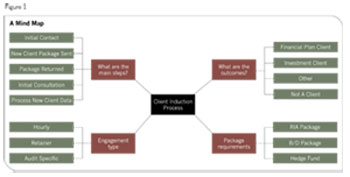If there is one aspect of a financial advisor's daily operations that has drawn questions in light of relatively new computer software offerings, it is workflow. Workflow management is a key way to ensure the smooth and efficient operation of a financial practice while permitting staff to accomplish common sets of tasks associated with a workflow. Workflow management systems vary, but one aspect they share is that they establish a series of tasks that generally can be configured to be automatically assigned based on the completion of a prior task or workflow task set.
The advantage of these systems is the avoidance of missing steps in a workflow process. The reduction and/or elimination of errors and duplication of tasks is another potential advantage.
So, if it is clear that workflow is such a great benefit to financial advisory practices, why is it not more universally used? One reason may be the complexity involved in developing workflow procedures. Another may be the misperception that establishing standardized procedures in a firm detracts from the customized nature of the relationship with the client.
To better understand the concept of workflow to your financial firm, it may be necessary to first understand what workflow is, how it works and what steps are needed to build workflow systems in your office.
One definition of workflow is that a workflow consists of a sequence of connected steps. It is a depiction of a sequence of operations, declared as the work of a person, a group of persons, an organization or staff, or one or more simple or complex mechanisms.
The development of a workflow should have at least three steps: 1.) A strategic planning step, which might include developing a mind map that can sort through all the random thoughts associated with workflows and organize them in some way; 2.) An organizational step in which a flowchart or other similar tool might be used to depict the flow of activities/tasks/events associated with a particular workflow task set; and 3.) Written steps in the workflow.
For purposes of illustration, a mind map might look similar to the Figure 1.

If you do not already have mind mapping software, you may wish to check out www.mindjet.com, www.mindgenius.com or the free http://freemind.sourceforge.net. If you already own a version of SmartDraw (www.smartdraw.com), you may already have mind-mapping capabilities. The beauty of mind mapping is the ease with which you can rearrange blocks of ideas/information/topics to create an organized approach. Once organized, you may wish to transfer this to a flowchart to better understand and depict steps in a workflow process.
Flowcharting is done to illustrate steps in a series of tasks associated with a workflow. There are several flowchart programs that can be used for this purpose, including the aforementioned SmartDraw.








